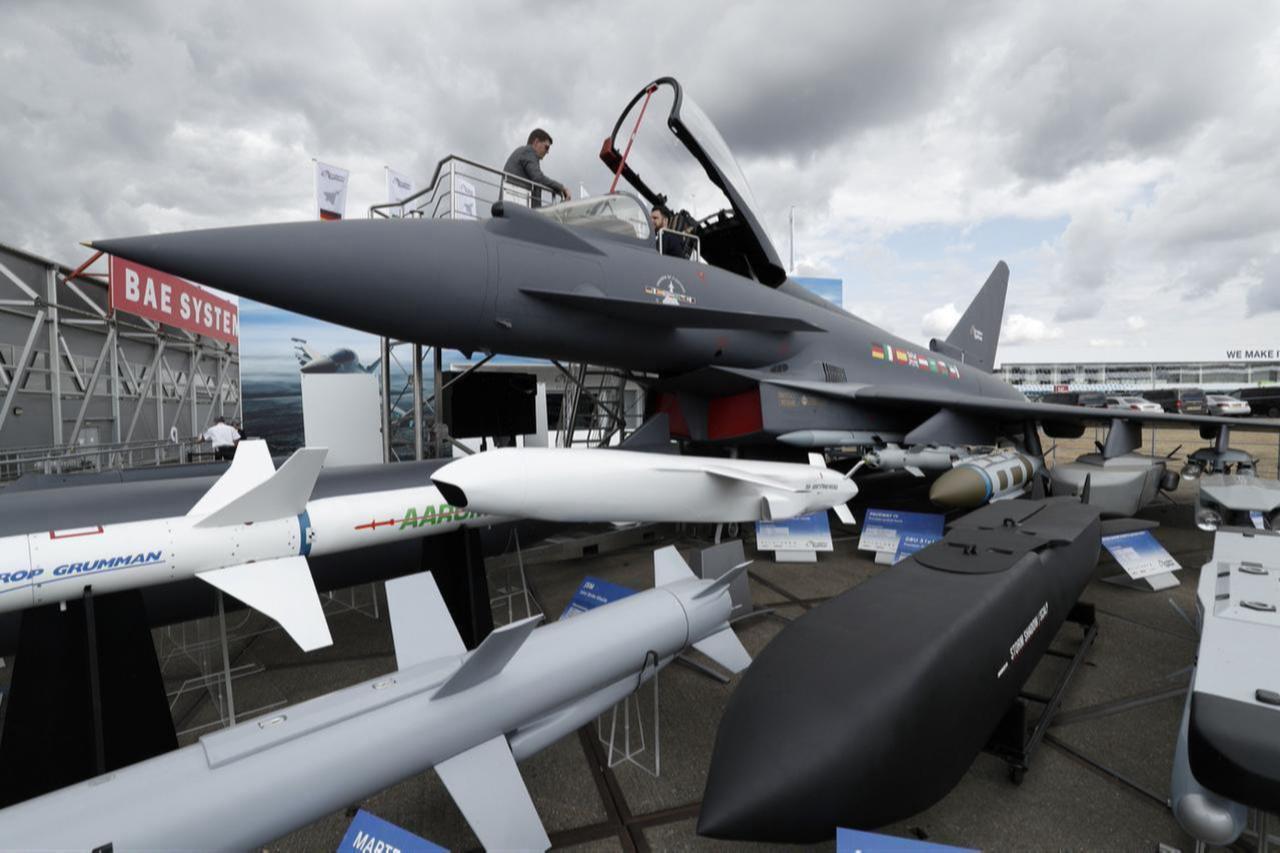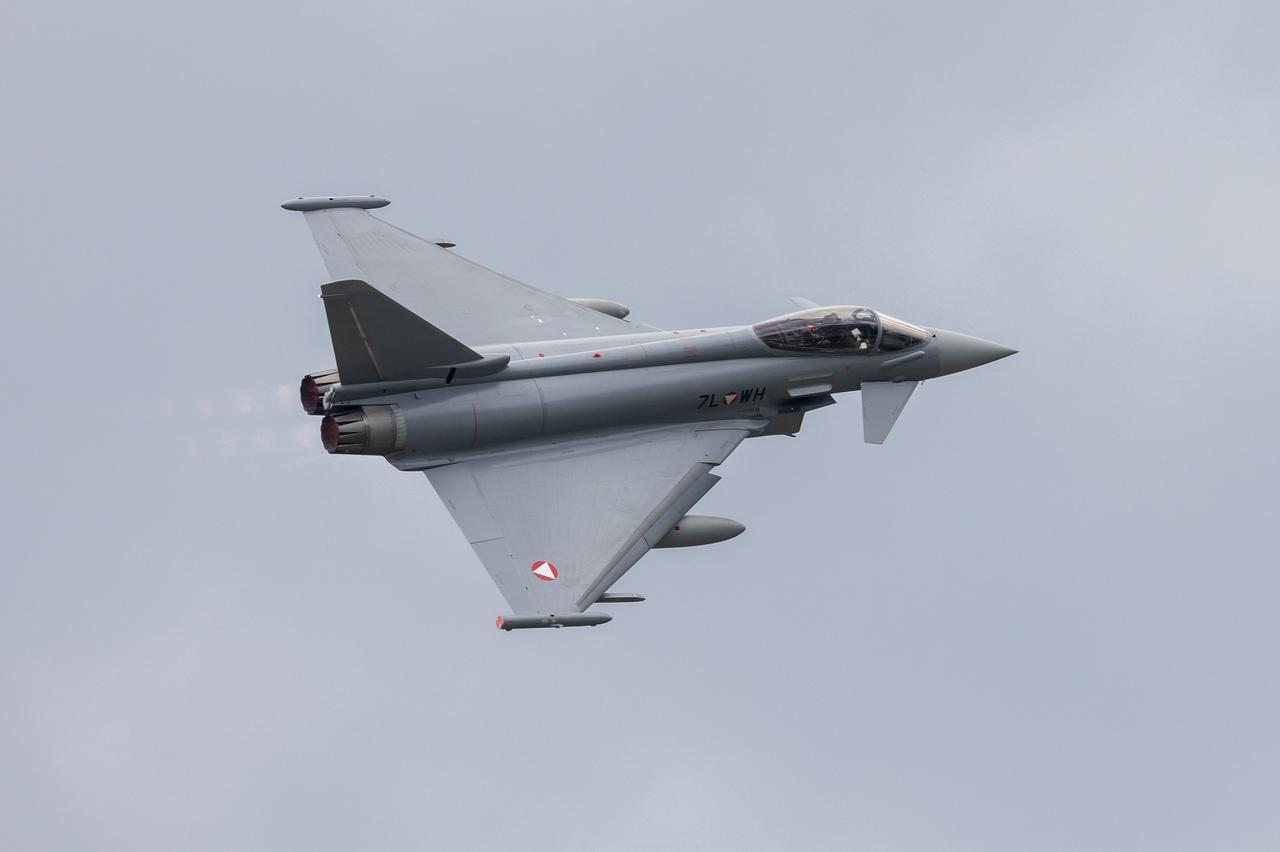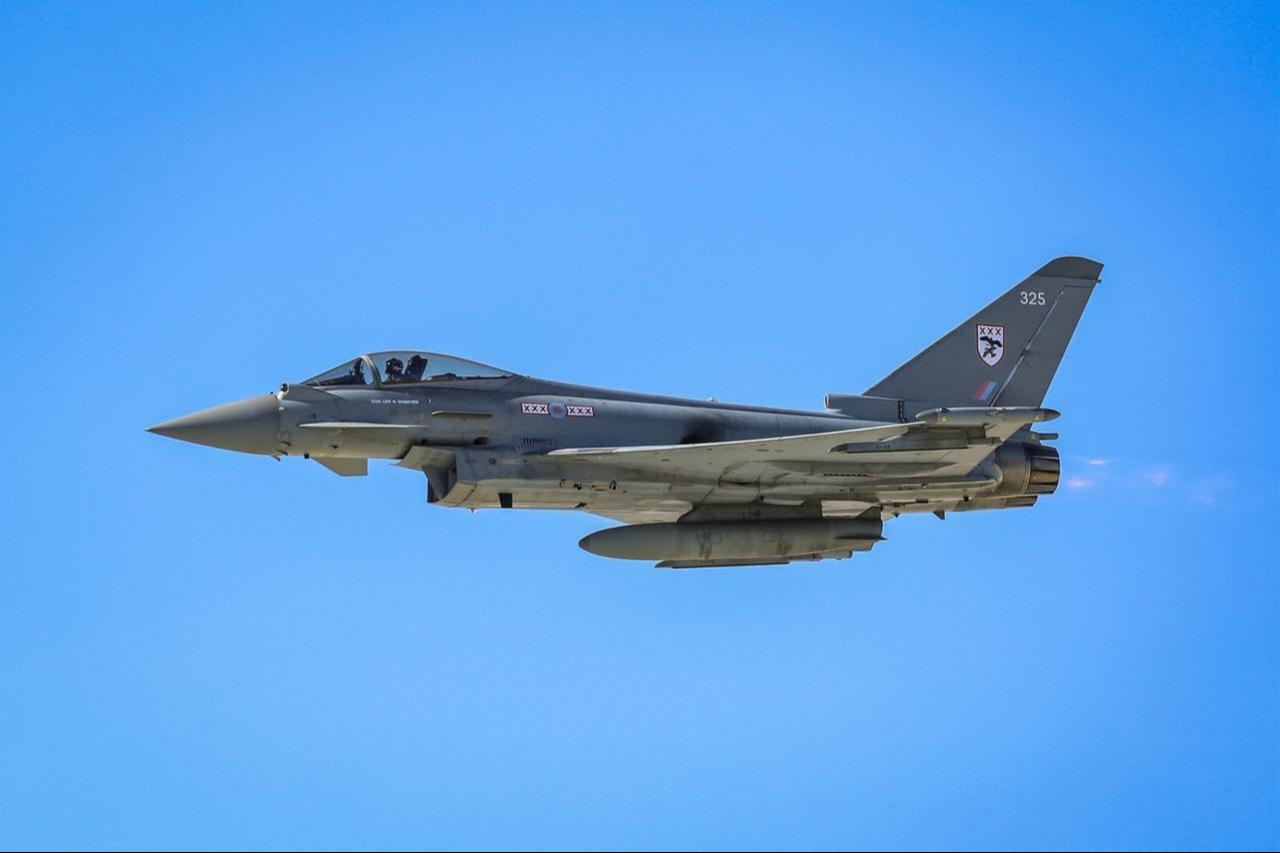
Eurofighter Typhoons became one of the highlights of President Recep Tayyip Erdogan's trip to Kuwait, Qatar, and Oman on Oct. 21-23. According to news reports that the Turkish president himself confirmed, the Turkish Air Force will acquire more than a dozen advanced fighter jets from Qatar and Oman while concluding negotiations with the Eurofighter consortium to acquire 40 units of the aircraft.
Depending on whom you ask, Türkiye plans to acquire 12 to 24 second-hand but still-in-good-condition Tranche 3A Typhoons from the two Persian Gulf countries, as well as another 16 to 28 units of the brand-new Tranche 4 from a consortium that includes Germany, Italy, Spain, and the United Kingdom. The British and German prime ministers are expected to visit Ankara this week to sign agreements with President Erdogan.
As uncertainty looms over Türkiye-U.S. ties and Turkish acquisition of new F-16s and fifth-generation F-35s, several reasons explain Ankara's choice of Typhoon. These include the plane’s impressive capabilities, a potential U.S. pivot away from Europe and NATO, and easing the pressure on Türkiye’s own prestige project, the fifth-generation national combat aircraft, MMU KAAN.
Yet despite all the advantages, integrating the Typhoon into the Turkish Air Force will not be easy because of acquisition and operating costs, as well as establishing new logistical and maintenance supply chains. Nor will the process come risk-free, especially with respect to European allies imposing sanctions on Türkiye in the future over political disagreements.

As a fighter, Typhoon could do great things for the Turkish Air Force.
With its canard delta-wing design, the Typhoon is highly effective against other fighters, especially in “dogfight” scenarios, as a famed F-22 “Raptor” found out at the Red Flag exercise in Alaska in 2012.
Tranche 3 Typhoons come with an advanced active electronically scanned radar, Captor-E, which could track tens of targets at the same time and alternate between air-to-air and air-to-ground modes.
Meanwhile, the Passive Infra-Red Airborne Track Equipment (PIRATE) infrared search and track (IRST) system enables identifying targets from a very long distance. With an advanced mission computer, sensor fusion capabilities, and Link 16 datalink, Typhoon processes and shares information with friendly forces.
When it comes to kinetic action, Typhoon carries such diverse weapons as the Meteor beyond-visual-range air-to-air missile with a reported range of 200 km and a “no escape zone” of 60 kilometers (37.2 miles), along with others like the AIM-120 AMRAAM, IRIS-T, and ASRAAM, which is expected to replace the short-range AIM-9X Sidewinder in the future.
Besides an electronic-warfare suit to blind the enemy and internal cannons for when it’s too close for missiles, Typhoon can carry land-attack munitions such as Brimstone, Storm Shadow, and Taurus missiles, as well as the Paveway family of laser-guided bombs.
The ability to integrate conformal fuel tanks frees up space on weapon stations under the wings.
It is easy to see that operating a capable 4.5th-gen aircraft, such as the Eurofighter Typhoon, could give new ideas to Turkish Air Force planners, who are looking to modernize Türkiye’s existing fleet of some 250 units of various blocks of F-16s through Turkish Aerospace Industries’ (TAI) “Ozgur” (“Free”) program while retiring the venerable F-4E Phantoms.
In addition, Türkiye is looking to add to its arsenal scores of Hurjet trainers and light attack aircraft and, of course, the KAAN in the 2030s. Meanwhile, it is still not clear whether new US-made platforms such as the F-16 Block 70 “Vipers” and the F-35 will ever join the Turkish military.
Another advantage of Turkish Typhoons is that they would lessen the pressure on TAI, the main developer of MMU KAAN, which is already on a tight production schedule.
Following its maiden flight on Feb. 21, 2024, at least five more Kaan prototypes will start testing even as the aircraft is scheduled to begin mass production in 2028 and gain initial operational capability soon thereafter.
Meanwhile, KAAN's Turkish-made engine, TF-35000, under development with TAI's subsidiary, TEI, is expected to be integrated into the twin-engine aircraft by 2032.
Obtaining 40 or more Typhoons (or perhaps new American combat planes) could give some breathing space to TAI and its suppliers on the KAAN project.
Two other advantages in acquiring the Typhoons for Türkiye will be related to “big picture” matters.
Besides falling out with its NATO allies over Syria policy and Türkiye’s domestic affairs, Ankara’s purchase of Russian S-400 air defense systems was made because it could not obtain U.S.-made Patriots and the French-Italian SAMP/T systems, giving Western countries a pretext to impose sanctions.
With the Typhoon acquisition, those voices in Türkiye calling for not only obtaining Russian but also Chinese systems will go quiet for a while.
But perhaps the most critical “grand strategy” gain for Türkiye in acquiring the Eurofighter Typhoon will be to mend fences with its European partners. Although the Turkish bid for EU membership has stalled—even groundbreaking political shifts in Türkiye or in Europe are unlikely to change that—Ankara is finding more common ground with European countries at a time when Russia is becoming more assertive and the neighborhood more dangerous.
In a world where the U.S. is becoming less certain of its global role and Europe is realizing that it needs to step up its game, buying a critical European platform would be a good investment for Türkiye.

But the advantages that make the Eurofighter Typhoon such an alluring option for Türkiye also contain serious risks. Just like U.S. sanctions (Washington’s 2019-2020 CAATSA have yet to be repealed), European countries also like to dangle defense sales over Türkiye’s head.
Indeed, the previous coalition government in Germany of Social Democrats and Greens had first blocked and then stalled consent on the Typhoon sale to Ankara.
Meanwhile, both Greece and Israel have made a noise over the Typhoon sales to Türkiye. Greece is concerned that its relative advantages in operating French-made Dassault Rafales, new F-16s, and future acquisition of F-35s from the United States will be negated by Turkish Air Force Typhoons.
European leaders have worked hard to address Greek worries, correctly pointing out that there is no need for concern so long as the recent détente between Ankara and Athens continues.
In fact, obtaining U.S. and European aircraft would add an additional layer of calm and reason to both the Turkish and Greek strategic calculus.
Technical issues might prove to be a major challenge in Türkiye’s acquisition of the Typhoon. The most important thing is the production bottlenecks. Only 14 units could be produced per year, although Eurofighter consortium’s CEO Jorge Tamarit Degenhardt told reporters at the Paris Air Show in June that the plan is to increase that number to 30 by 2028, according to Breaking Defense.
At present, it is unlikely that Türkiye’s capable defense industries could help European partners to pick up the slack. For a purchase of only 40 aircraft (about half of them to be second-hand), there is little point for either the Turkish or European side to start new production lines, although that might change should Ankara increase the number of its Typhoon orders.
Leading Turkish defense analyst Arda Mevlutoglu made a point along similar lines on X last week when he pointed out the awkwardness in celebrating the Eurofighter acquisition when, during the formative years of the Typhoon program in the 2000s, Türkiye was offered to become the fifth partner, but policy planners did not see the need because they could obtain pretty much anything they wished from the Americans.
Today, getting the Typhoon merely as a customer and not a production partner is a bit hurtful.
Speaking of the relatively low number of orders, Türkiye is unlikely to ask the European consortium to integrate Turkish-made Gokhan family air-to-air missiles and air-to-ground munitions, as well as its indigenous sensors, into the Typhoons. Such integration work is not only a question of monetary costs but also opportunity costs.
TAI, the Turkish Air Force, and other publicly owned Turkish defense giants such as Aselsan and Havelsan probably do not have the physical space or the personnel to spare for such a hefty undertaking right now.
That brings us to the issue of costs. Consortium member Germany recently ordered 20 new Tranche 5 Typhoons, set for delivery in the 2030s, at a price tag of €3.75 billion ($4.35 billion) by the 2030s, or a unit cost of about $218 million per aircraft, which includes spare jets and parts.
Qatar announced in late 2024 that it intended to purchase another 12 Typhoons for 2.8 billion ($3.72 billion), or more than $300 million/unit.
Compared to the stated “flyaway” price of an F-16 Block 70 at about $70 million and an hourly operating cost of $27,000, the Typhoon’s operational cost of €60,000 (nearly $70,000)/hour stands out.
But in an imperfect world, facing imperfect choices, and when weighed against an increasingly dangerous world with an aging fleet of F-16s, the need to retire F-4s, and the time required to fully develop Hurjets and Kaans, the Eurofighter Typhoon will be a good addition to the Turkish Armed Forces.